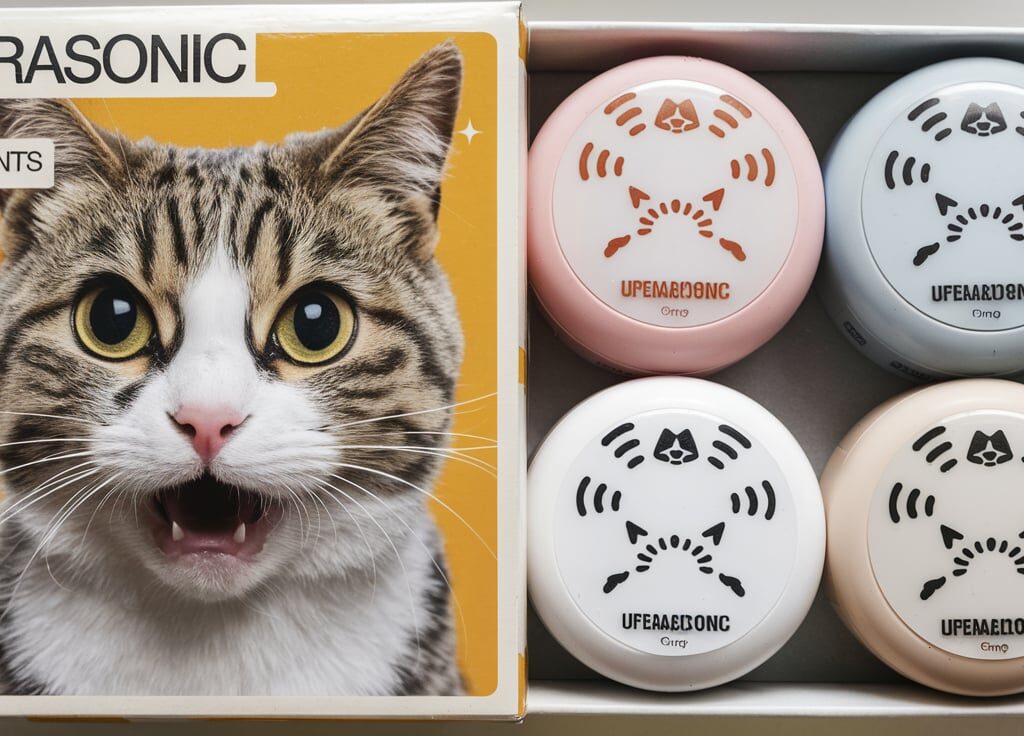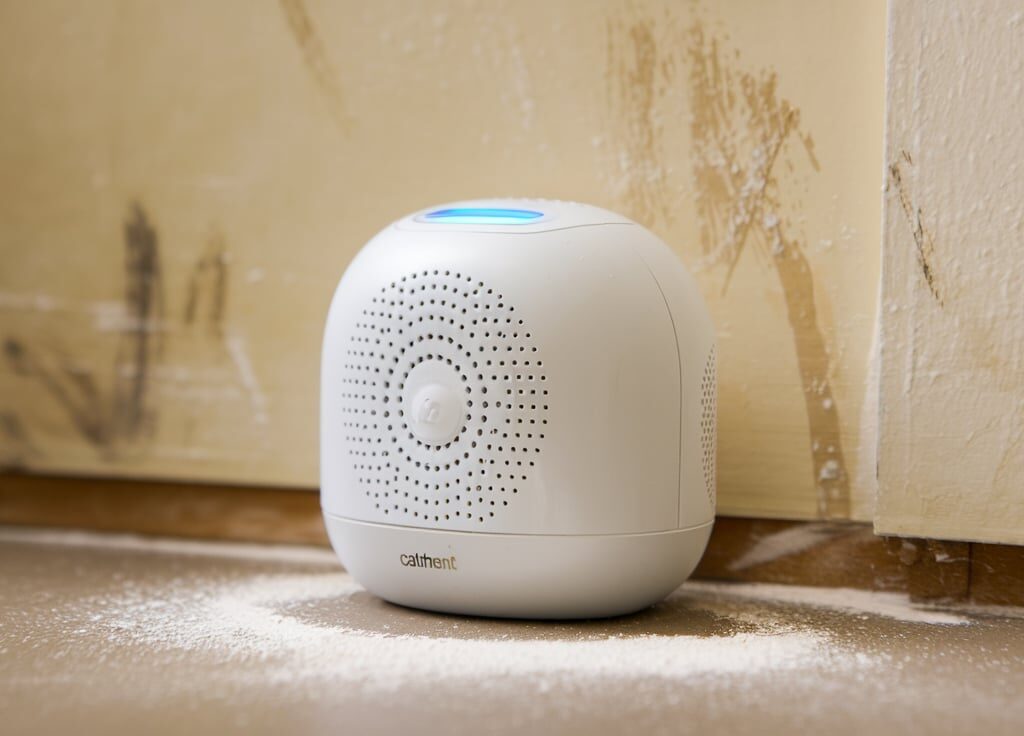Are you tired of finding your garden or yard turned into a playground by neighborhood cats? You’re not alone.
Many homeowners are on the hunt for effective solutions to keep these furry intruders at bay. One popular option you might have come across is ultrasonic cat repellents. But do they really work, or are they just another gadget that promises more than it delivers?
Before you invest in one, it’s crucial to understand if this high-tech solution can truly give you the peace and tidy garden you’re longing for. By the end of this article, you’ll discover whether ultrasonic cat repellents are the answer to your feline woes or if you need to explore other avenues. Let’s dive in and find out how you can reclaim your outdoor space.
How Ultrasonic Cat Repellents Operate
Ultrasonic cat repellents emit high-frequency sounds that are unpleasant to cats. These sounds typically remain inaudible to humans. Many users claim effectiveness in deterring cats from gardens and yards.
Understanding how ultrasonic cat repellents operate is key to deciding if they are right for your garden or home. These devices promise a humane way to deter cats by using sound frequencies beyond human hearing. But how exactly do they work, and are they effective? Let’s break down the mechanics of these devices. Ultrasonic cat repellents emit sound waves at high frequencies. These frequencies are typically above 20 kHz, making them inaudible to humans but irritating to cats. When activated, the device releases these sound waves, creating an uncomfortable environment for cats. Most ultrasonic repellents are powered by batteries or solar panels. This makes them easy to place anywhere without the hassle of wiring. You can set them up in your garden, near trash cans, or even indoors. These devices often come with motion sensors. Imagine your cat walking into a room and immediately triggering the repellent. The sudden sound wave deters them from lingering. This feature ensures that the device only operates when needed, conserving energy and reducing noise pollution.
Personal Experience With Ultrasonic Cat Repellents
I once faced a problem with neighborhood cats using my garden as their litter box. I decided to try an ultrasonic repellent. It was simple to set up, and within a few days, the cats seemed to avoid the area entirely. However, not all cats react the same way. Some might be deterred immediately, while others may be less sensitive to ultrasonic sounds. Have you ever tried a solution that worked for some but not for others?
Effectiveness And Limitations
Ultrasonic repellents can be effective, but they are not foolproof. Factors like distance, obstacles, and the cat’s hearing ability can impact their success. Placing the device strategically is crucial for maximum effect. Consider the environment. Are there walls or furniture blocking the sound waves? Make sure the repellent has a clear path to the areas you want to protect. It’s important to manage expectations. While ultrasonic repellents can reduce unwanted feline visits, they may not eliminate them entirely. Would you rely on a single method, or combine it with other deterrents for better results? Understanding these aspects will help you make an informed choice. Ultrasonic repellents offer a non-invasive solution to your cat problems, but knowing their operation and limitations is key to using them effectively.
Common Claims And Beliefs
Ultrasonic cat repellents are popular devices in pest control. They emit high-frequency sound waves to deter cats. Many people believe in their effectiveness. Let’s explore common claims and beliefs surrounding these devices.
Claims Of Immediate Results
Some users report instant changes. Cats seem to avoid areas immediately. The sound waves are thought to irritate cats. This drives them away from the vicinity. Users expect quick results without the mess.
Belief In Humane Deterrence
Others praise ultrasonic repellents as humane. They don’t harm cats physically. The sound is uncomfortable, not painful. Animal lovers prefer this method. It offers a non-lethal solution to unwanted cat visits.
Assumption Of Long-term Effectiveness
Users hope for lasting results. Some believe cats learn over time. They associate certain areas with discomfort. The repellents promise ongoing protection. Owners expect cats will stay away permanently.
Perception Of Safety For Humans
Many claim ultrasonic repellents are safe for humans. The sound frequency is beyond human hearing. It doesn’t disturb daily life. Families with children find comfort in this feature. Pets are undisturbed, except for cats.
Trust In Low Maintenance
People appreciate the low upkeep. No need for chemicals or traps. Devices require little to no maintenance. Users enjoy the convenience. It’s a hassle-free way to keep cats away.

Scientific Evidence
When it comes to ultrasonic cat repellents, many homeowners and gardeners wonder if these devices truly work. The answer lies in scientific evidence, which sheds light on their effectiveness and limitations. In this section, we’ll explore studies on their effectiveness and the limitations of this research. Understanding the science behind these gadgets could help you decide whether they’re worth investing in for your feline woes.
Studies On Effectiveness
Scientific studies on ultrasonic cat repellents have provided mixed results. Some researchers have found that these devices can deter cats effectively under controlled conditions. For example, a study published in a wildlife journal observed cats steering clear of areas where ultrasonic devices were active. The sound waves seemed to irritate their sensitive hearing, prompting them to avoid those zones.
Yet, not all studies agree. Others have noted that cats can become accustomed to the ultrasonic sounds over time. This can render the devices less effective, especially if they’re not used alongside other deterrents. You might wonder if your neighborhood cats will just learn to ignore the noise, continuing their nightly visits to your garden.
Limitations Of Research
The research on ultrasonic cat repellents has limitations that could impact your decision. Firstly, many studies are conducted in controlled environments, not accounting for real-world factors like weather or other ambient noises. This means the effectiveness observed might not translate directly to your backyard.
Furthermore, individual differences in cats’ hearing and behavior can affect outcomes. Not every cat responds the same way, and some might not be bothered by ultrasonic sounds at all. This variability makes it hard to predict how well a repellent will work for your specific situation.
Given these limitations, it’s crucial to ask yourself: Are you willing to test and possibly combine different deterrents to protect your garden from curious kitties? Scientific evidence suggests that while ultrasonic repellents can be part of the solution, they shouldn’t be the sole strategy you rely on.
Real-world Experiences
Discover whether ultrasonic cat repellents effectively deter cats from gardens and yards. Users report mixed results, with some noting reduced cat visits. Others see no change, suggesting variable effectiveness based on environment and cat behavior.
Real-world experiences with ultrasonic cat repellents can offer valuable insights that go beyond product specifications and marketing claims. These devices promise to deter cats using high-frequency sounds that are inaudible to humans. But how do they perform in the real world? Understanding user testimonials, successful cases, and reported failures can help you decide if these devices are right for your situation.
User Testimonials
Many users have shared their experiences with ultrasonic cat repellents online. Some have found them to be a game-changer in keeping their gardens cat-free. One user noted, “I was skeptical at first, but after installing the device, I noticed a significant decrease in the number of stray cats in my backyard.” Others appreciate the humane aspect of these devices. “I didn’t want to harm the cats, just keep them out of my flower beds,” a gardener shared. Their satisfaction suggests these repellents can be both effective and ethical.
Successful Cases
There have been numerous successful cases where ultrasonic cat repellents have resolved persistent issues. In a bustling suburban neighborhood, one family managed to reclaim their sandbox from the local cat population. They simply placed the device nearby, and the cats stopped visiting. A community garden also benefitted by installing several units around the perimeter. Members reported a noticeable reduction in cat-related disturbances, allowing their plants to thrive. These examples highlight how strategic placement can enhance effectiveness.
Reported Failures
Not all experiences have been positive, though. Some users report minimal impact despite proper installation. A homeowner noted, “The cats seemed unfazed by the device, continuing to lounge on my porch.” In other instances, the repellents worked initially but lost effectiveness over time. This suggests that cats may acclimate to the sound, reducing its deterrent effect. Such reports raise questions about consistency and reliability. Have you tried using ultrasonic cat repellents? If so, what was your experience like? Your feedback could help others make an informed decision.
Factors Affecting Performance
Ultrasonic cat repellents vary in effectiveness. Factors include the device’s frequency range and placement. Cats’ hearing sensitivity also plays a role. Environmental noise can disrupt performance. Regular maintenance ensures optimal results.
Understanding the factors affecting the performance of ultrasonic cat repellents can help you make the most out of your purchase. These devices promise to deter unwanted feline visitors with minimal effort. However, their effectiveness can vary based on a few key elements. Let’s explore these aspects to ensure your ultrasonic cat repellent works at its best.
Environmental Conditions
Weather and surroundings play a crucial role. Heavy rain or snow can dampen the sound waves, reducing the repellent’s effectiveness. Likewise, thick vegetation or walls may obstruct the ultrasonic sound from reaching its target. Think about the time of day. Cats are more active during dawn and dusk, so positioning your device to function optimally during these hours could make a difference.
Device Placement
Where you place the ultrasonic cat repellent matters. Setting it too high might miss ground-level intruders, while placing it too low could limit its range. Aim for chest height to maximize coverage. Consider the direction the device faces. Direct it toward areas where cats frequently enter your garden. This will increase the chances of deterring them effectively.
Cat Behavior
Not all cats react the same way to ultrasonic sounds. Some may be more sensitive, while others could be indifferent. This means that you might need to adjust the settings or try different positions. Observe the cats over time. If certain cats seem unfazed, experiment with different frequencies or combine the repellent with other deterrent methods, like motion-activated sprinklers or natural scents. Have you found these devices effective in your garden? Or do you think a more hands-on approach is needed? Your experiences could provide valuable insights for others navigating the same feline challenges.
Alternative Methods For Deterring Cats
While ultrasonic cat repellents offer a tech-based solution, exploring alternative methods can be effective. These methods are often simple and cost-effective. They can also be more environmentally friendly. Let’s delve into some practical approaches for keeping cats at bay.
Physical Barriers
Physical barriers can prevent cats from entering specific areas. Fences are a common choice. Ensure they are high enough to deter climbing. Mesh screens can cover garden beds. They protect plants while keeping cats out. Netting can also be effective for larger areas. Consider adding spikes to fences. They discourage cats from perching.
Natural Deterrents
Natural deterrents use scents and textures that cats dislike. Citrus peels are one example. Scatter them around the garden. Cats dislike the strong smell. Vinegar can also work. Spray it around entry points. Certain plants, like lavender, repel cats. Plant them in strategic spots. They add beauty while keeping cats away.
Behavioral Training
Training can change a cat’s habits. Use gentle methods to guide behavior. Reward good behavior with treats. Discourage unwanted actions calmly. Consistency is key. Use a squirt bottle for deterrence. Cats dislike sudden sprays. Loud noises can also work. They startle cats and redirect them. Over time, cats learn boundaries.
Pros And Cons Of Ultrasonic Repellents
Ultrasonic cat repellents offer a humane solution to keep cats away from gardens. They emit high-frequency sounds that deter cats without harming them. While effective for many, these devices may not work on all cats, as some may become accustomed to the noise over time.
When you’re dealing with unwanted feline visitors in your garden or on your property, ultrasonic cat repellents might catch your eye. These devices promise to keep cats at bay using sound frequencies that are beyond human hearing. But are they really effective? Here’s a look at the pros and cons of using ultrasonic repellents to help you decide if they might be the right solution for you.
Advantages
Ultrasonic cat repellents are easy to install. You simply place them in the desired location, and they start working immediately. There’s no need for complicated setups or maintenance. These devices are humane. They don’t harm cats; they simply make the area uncomfortable for them. If you love animals but want to keep them out, this might be the perfect compromise. They are environmentally friendly. Unlike chemical repellents, they don’t introduce toxins into your garden or yard. You can protect your plants without worrying about the environmental impact.
Disadvantages
Some cats might not be deterred. Cats have varying sensitivity to sound, and the effectiveness can differ widely. If your neighbor’s tabby keeps visiting, it might not be bothered at all. These devices can be affected by obstacles. Walls, thick vegetation, or other barriers can reduce the range and effectiveness of the ultrasonic waves. You’ll need to carefully consider the placement. They require a power source. Whether batteries or solar power, they need energy to run. This could mean ongoing costs or maintenance if you need to replace batteries frequently. Have you used an ultrasonic cat repellent before, and how did it work for you? Share your experiences in the comments below!
Frequently Asked Questions
What Is The Most Effective Cat Repellent?
The most effective cat repellent is a mix of citrus peels, vinegar, and water. Cats dislike strong citrus scents. Spray the mixture around areas you want to keep cat-free. Alternatively, use commercial cat repellents with natural ingredients for outdoor use.
What Is The Best Sound Deterrent For Cats?
Ultrasonic cat deterrents are effective, emitting high-frequency sounds unpleasant to cats but inaudible to humans. They can deter cats without causing harm. Choose a device specifically designed for outdoor use and ensure it covers the necessary area for best results.
Are Ultrasonic Pest Repellers Okay For Cats?
Ultrasonic pest repellers are generally safe for cats. Their hearing might be sensitive, but most cats show no adverse reactions. It’s important to monitor your cat’s behavior when using these devices. If your cat seems distressed, consider repositioning the device or exploring alternative pest control methods.
What Is The Best Thing To Stop Cats?
Use deterrents like citrus sprays or motion-activated devices to keep cats away. Create barriers with netting or fences. Plant cat-repelling herbs like lavender or rosemary. These methods help to stop cats effectively and humanely.
Conclusion
Ultrasonic cat repellents can be effective for some situations. They emit high-frequency sounds. Cats find these sounds unpleasant. Not all cats react the same way, though. Some might ignore the noise. Results can vary based on the environment. Consider testing one in your garden.
Observe cat behavior over time. Combining repellents with other methods can enhance effectiveness. Always ensure the repellent is safe for pets. It’s a simple, humane option. Try it if you’re facing cat issues. Your garden might become cat-free soon.



